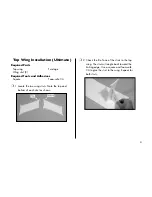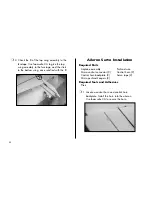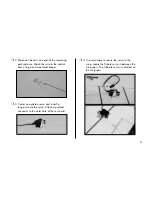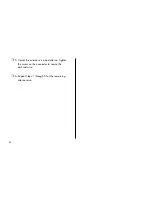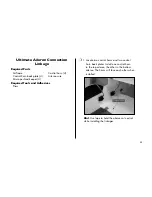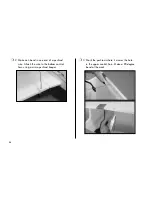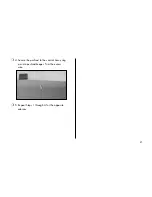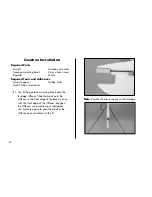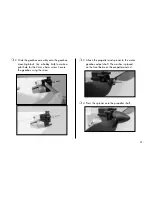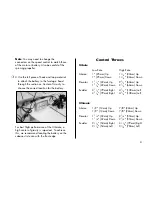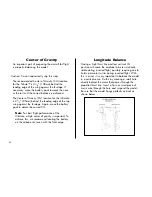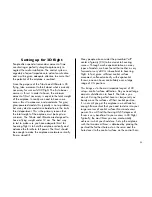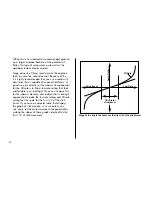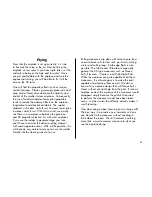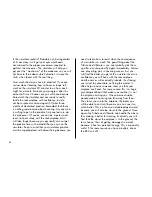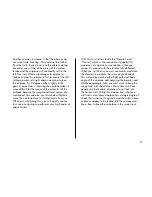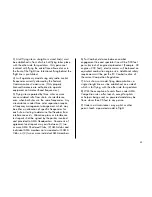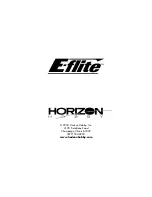
35
Flying
Now that the airplane is set up correctly, it is time
to fine-tune the setup in the air. Start by flying the
airplane on low rates. If you have triple rates, set the
mid-rate in between the high and low rates. Once
you get comfortable with the airplane and tune the
exponential setting, you will be able to fly it all the
time on the 3D rates.
One will find the propeller effects (such as torque,
spiral slipstream, P-factor, gyroscopic procession and
prop normal force) often dominate the stability and
control of the smaller indoor airplanes. Consequently,
the use of smaller diameter/lower-pitch propellers
tends to reduce the adverse effects on the airplane’s
longitudinal and directional stability. The smaller
diameter will reduce static thrust, however lower pitch
increases static thrust. With this in mind, we quickly
see there is a compromise between the precision
and 3D propeller selection. As with most airplanes,
if you use the rudder to generate large yaw rate
you’ll have to counter the adverse rolling moment
with some opposite aileron. With a little practice, this
will become very natural and you can use the rudder
literally like the steering wheel of a car.
Rolling maneuvers are done with relative ease from
normal aileron rolls to slow rolls, point rolls, rolling
circles and rolling loops. Knife-edge flight is also
possible. The Tribute and Ultimate are especially
good at the 3D type maneuvers such as Torque
Rolls, Elevators / Harriers, and High-Alpha Rolls.
While the airplanes are quite capable of all these
maneuvers, the ultimate goal is to make the pilot
capable of performing them as well. We do not
know of any airplane design that will Torque Roll /
Hover without constant help from the pilot. If such an
airplane existed, the mystique of the maneuver would
disappear simply because the pilot skill required
to perform the maneuver would have been taken
away…in other words the difficulty actually makes it
worth learning.
How does one go about learning how to torque roll?
The best way is to practice on a simulator until you
can literally do the maneuver without needing to
think about the inputs. The skill involved is nothing
more than a muscle memory response to what you
see the airplane doing.
34
While this is not standard or recommended practice
on a larger airplane because of the potential of
flutter, this type of setup works quite well on the
aerobatic indoor electric models.
Large amounts of throw tend to make the airplane
feel very sensitive around neutral. Because of this,
it is highly recommended that you use a radio with
dual rates that is capable of exponential throws. A
good way to correctly set the amount of exponential
for the 3D-rate is to find a low-rate setting that feels
comfortable in normal flight. Once you’ve done this
for the aileron, elevator, and rudder, dial in enough
exponential to make the low-rate setting and 3D-rate
setting feel the same for the first 1/3 of the stick
travel. If you have a computer radio that displays
the graph of stick position vs. servo output, you
can easily set the correct amount of exponential by
making the slopes of these graphs identical for the
first 1/3 of stick movement.
Slope of the line is the same for the first 1/3 of the stick travel
Stick travel
3D Rate
Low Rate
Servo Output
1/3 of total
stick travel


